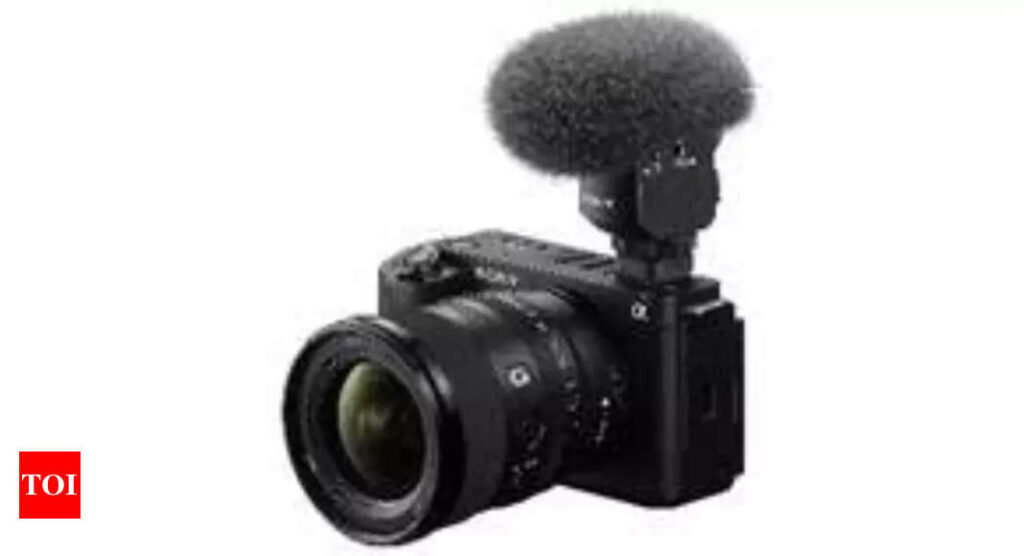[ad_1]
Sony ECM-M1 shotgun microphone: Pricing and availability
The ECM-M1 microphone will be available across all Sony Center, Alpha Flagship stores, Sony authorised dealers, e-commerce websites (Amazon and Flipkart) and major electronic stores across India from July 28.
Sony ECM-M1 shotgun microphone: Key specs and features
The microphone boasts a new mode dial with a locking mechanism that ensures easy, secure switching of sound pickup modes. The ECM-M1 features noise reduction utilities like a noise-cut filter for reducing background noise and a low-cut filter for minimising vibration and low-frequency noise. These filters are implemented through digital signal processing, maximising audio quality at the recording stage and thereby reducing the need for complex post-processing. It also supports 4-channel recording (compatible cameras only), allowing safety recording in omnidirectional mode on channels 3 and 4, while channels 1 and 2 focus on selected directivity.
The ECM-M1 has eight audio recording modes including stereo, for targeted sound pickup in one microphone. The Beamforming technology combines four discrete microphone capsules with precision algorithms, to maximise pickup sensitivity in the desired directions while reducing it in others. This results in a compact and versatile microphone with high performance even in challenging audio environments.
By turning a dial on the rear of the microphone, it will allow users a selection of pickup patterns and a lock button in the centre to prevent accidental changes. Other controls are also easy to understand and operate. The eight-dial selectable shooting modes are:
1. Super-directional: Sounds from the front are captured and ambient sounds are suppressed. This can help in shooting or streaming videos where the subject speaks directly in front of the microphone.
2. Unidirectional: Sounds from a wide region in front of the unit are captured. Uni-directional mode is apt for recording conferences and meetings.
3. Omnidirectional: Sounds from all directions are captured with equal sensitivity. Omni-directional mode captures sound like a typical built-in camera mic, but with better clarity and sensitivity and is recommended for recording environmental or ambient sounds.
4. Super-directional (Front + Rear): Sounds from the front and rear of the unit are captured with equal sensitivity, while sounds from the left and right are suppressed. Super-directional mode enables the recording of sounds from the subject in front of the unit as well as the voice of the videographer and ensures clear sound when recording interviews.
5. Super-directional (Rear): Sounds from the rear of the unit are captured while suppressing sound from the front. Super-directional (Rear) mode is ideal for narrating while shooting scenery.
6. Super-directional (Front/Rear) separate: Sounds from the front (1ch) and rear (2ch) of the unit are captured with equal sensitivity and onto separate audio channels, while sounds from the left and right are suppressed. Super-directional mode enables individual volume adjustment of the front and rear audio after video recording, so you can dial in the perfect balance of audio from in front and behind the camera in the edit.
7. Ultra-directional: The microphone picks up the target sound from the front (within approximately 30-degree width) while suppressing the other sound, by dynamically adapting to the ambient sound in the surroundings. The Ultra-directional mode can help shoot scenes such as interviews or selfies where the subject is always in front of the microphone.
8. Stereo: Realistic video recording is possible by clearly localising the left (1ch) and right (2ch) sound sources. Stereo mode is perfect for shooting videos of moving objects, such as racing cars and trains, or musical performances in theatres.
[ad_2]
Source link











More Stories
Google Maps: Three privacy features coming to Google Maps on Android, iPhones
Most-Downloaded IPhone App: This Chinese app was the most-downloaded iPhone app in the US in 2023
Ukraine’s largest mobile operator goes offline for millions of users after cyber attack